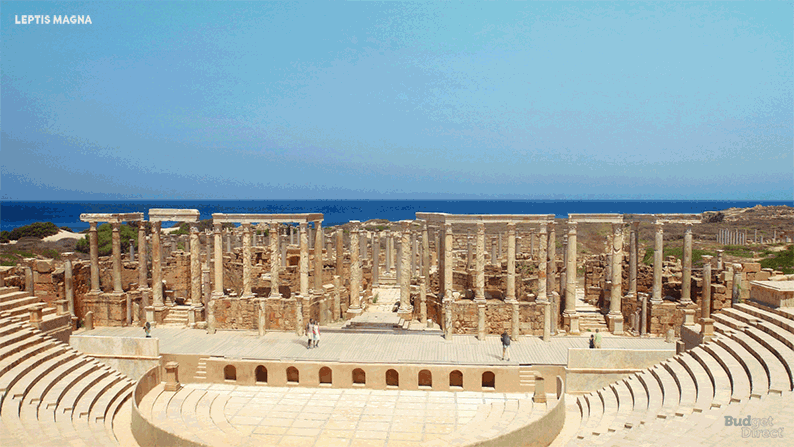According to myth, Rome was founded by twins, Romulus and Remus. Their mother, Rhea, was exiled from home when her father, King Amulius, grew paranoid of being dethroned by his descendants. King Amulius saw the twins as a threat as well, so he killed his daughter Rhea and abandoned the two babies in the Tiber River.
Luckily, a she-wolf, Lupa, saved the twins and nursed them back to health. Romulus and Remus would go on to found the city of Rome together. However, a dispute over city borders led Romulus to kill his brother and name the city after himself (Rome). As king, Romulus grew the city’s population by abducting women from the nearby tribe.
The historical origin of Rome is a lot less interesting than the dramatic story of Romulus and Remus. The city was actually first founded by farmers and Shepards who lived in huts on Palatine Hill. They still stand in Rome today.
Before her death, Rhea served as a Vestal Virgin. Young girls of prominent families were designated to serve life-long terms as virgin priestesses to the goddess Vesta. Rhea had her twin sons through divine intervention.
Most Roman gods were birthed from a Greek counter part. The Roman god Jupiter is the god of all gods and is a reflection of the Greek god Zeus. Roman Venus and Greek Aphrodite are the goddess of love and beauty. Roman Neptune and Greek Poseidon are the god of the sea.
Sometimes, however, the two counterparts can slightly differ. Roman Pluto and Greek Hades are both the god of the underworld, but Pluto also has an associate with wealth. The Romans actively worshipped Pluto and had temples in his honor, while the Greeks seemed to have a respectful fear of Hades. They were content not trying to get his attention.
The Colosseum was Rome’s entertainment hotspot. It hosted an array of events from gladiator battles, staged naval battles, and hunts. Similar to modern MMA or boxing, gladiators were categorized by weight class, experience, and fighting style. The stadium could seat between 50-80,000 spectators, eager to watch the displays.
Unlike the movies, gladiator battles weren’t always to the death. Sometimes a referee would step in if a warrior was seriously injured. In rare cases, both gladiators would be spared if they showed extraordinary valiance. The final fate of a defeated, but living gladiator was left up to the crowd and emperor to decided. Unfortunately, most gladiators did not live beyond their mid-20s.
The Colosseum is arguably the most well known architectural beauty in all of Rome. Still standing after 2,000 years, the Colosseum was originally built under the rule of Emperor Vespasian. It served as an apology gift to the citizens of Rome for all they suffering they endured under the previous ruler, Nero.
Emperor Nero was a tyrant, infamous for killing the women closest to him. He even killed his own mother who, sometimes, was also his lover — talk about mommy issues.
Emperor Nero took the blame for the Great Fire of Rome. The fire raged on for six days and turned 10 of Rome’s 14 districts to ash. Already filled with hatred towards their Emperor, the Romans blamed Nero, who then turned it around and blamed a little known “cult” that was making its way through the ranks, Christians.
Today, historians understand that Rome has many conditions that make it susceptible to fires. Some historians think the Great Fire of Rome could have easily been an accident.
It seems Roman Emperors have a mean streak, as Emperor Commodus was known for fighting unfairly in gladiator battles. Commodus reportedly fought against men that had lost their feat or offered his opponents sponges instead rocks as weapons.
Earlier, it was mentioned that the Colosseum hosted staged naval fights. Research shows they achieved this by flooding the colosseum with five to seven feet of water.
The infamous missing chunk from the Colosseum is believed to have crumbled during earthquakes that occurred during the 400s AD, close to the time of the collapse of the empire.
Ever wonder why you see so many depictions of Romans lying down on a chaise while being fed grapes? This was a common practice among wealthy Romans. Lying horizontally was believed to help aid digestion and reduce bloating.
Ancient recipes for soap have been found in Rome. However, it seems that Romans didn’t exactly understand its hygienic importance. Instead of using soap to wash their clothes, they would mix water and urine to clean their laundry.
Even wilder than that, laundry workers would collect batches of urine by setting large vessels on the streets for anyone to pee into as they please. An interesting tactic for sure, but I think I’ll stick to my tide pods.
Romans also developed a recipe for concrete that was so advanced the concrete grew stronger for decades after being set. The concrete released less CO2 into the atmosphere than any of its modern counterparts. It was also able to self repair any cracks that occurred, making it an incredibly durable material.
The process to make this concrete stumped historians so much that it wasn’t until 2013 when UC Berkley published the first article detailing the process of making Roman concrete.
Similar to modern marriages, Romans sealed their marriage pacts with a kiss after the terms of marriage had been contractually written.
Unlike modern divorce, Romans didn’t have to go through long, drawn out legal processes to split up. The couple simply had to announce their intent to separate in front of a group of seven witnesses and it was done.
While Rome was very much a patriarchal society, women had a way of gaining more freedom as citizens. Sadly, about half of Rome’s children died before they reached the age of 10, and one in four infants didn’t survive their first year alive, either due to injury or illness. Because of this, mothers who had at least three living children were recognized as legally independent by the government.




















All historic evidence is just stories. So, just because you don't know of it doesn't mean it doesn't exist...